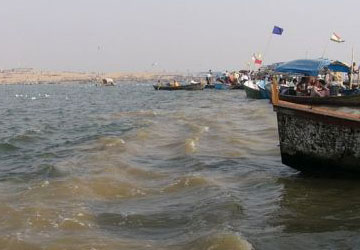 The Indian government has expressed confidence that by 2020 the polluted
The Indian government has expressed confidence that by 2020 the polluted
"The Union government is confident that it will clean the Ganga river by 2020 and Rs 15,000 crore will be spent for this purpose under the river development fund," environment minister Jairam Ramesh said in Varanasi.
The government plans to save the river by making it 'nirmal' (clean) and 'aviral' (free-flowing), he told reporters.
"We will not only ensure 'aviral dhara' (continuous flow of the river stream), as being demanded by several non-governmental organisations (NGOs), but also ensure 'nirmal dhara' (clean and pollution-free flow), the minister said.
Mr Ramesh said that the World Bank has also committed at least $1 billion to
The clean-up involves building modern sewage treatment, revamping drains and other measures to improve the quality of the river, which has been badly polluted by industrial chemicals, farm pesticides and other sewage.
"This is a project of enormous national importance and I am pleased that the World Bank has come forward to assist us," he said, adding that the initial assistance of $1 billion would be provided over the next four to five years.
In 1985, then prime minister Rajiv Gandhi had launched a grand Ganga clean-up project—the
"We have made a fresh proposal to the 13th Finance Commission stating that the costs of operating and maintaining sewage treatment plants (STPs) along the
A number of STPs built under the Ganga Action Plan-I and II were not operating to their full capacity due to financial constraints of municipal bodies. The move would give them some breathing space to reform their finances.
Asked about the failure of the Ganga Action Plans, the minister said that GAP-I and GAP-II were initiated to control direct discharge of sewage and industrial effluents into the river from 29 major and 23 small cities as well as 48 towns from Uttarakhand to
He said that about 260 crore litres of untreated sewage and effluents are discharged into the river daily and the NGOs working to save the
During his visit to the
— Yogesh Sapkale